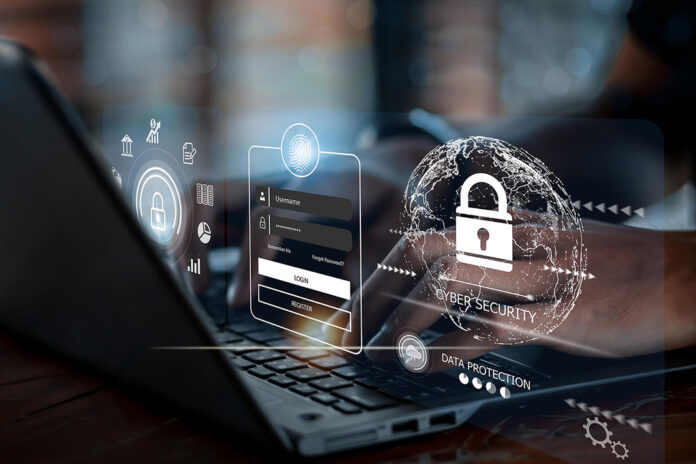In light of the recent cyber attack on London Drug that caused the temporary closure of all their locations and consumers’ data at risk, retailers, both big and small, must prioritize protecting their digital assets and customer data. Some fundamental cybersecurity measures every retailer should implement to safeguard their business against potential cyber threats are crucial for consumer confidence.
Secure Your Web Applications
Web applications are the backbone of online retail operations. Ensuring your security is paramount. Here are key steps to secure web applications:
Use HTTPS: Ensure all data transmitted between your web servers and browsers is encrypted by implementing HTTPS. This protects against data interception and tampering.
Web Application Firewalls (WAFs): Deploy WAFs to filter and monitor HTTP traffic between your web application and the Internet. They can protect against various attacks, such as SQL injection and cross-site scripting (XSS).
Regular Security Testing: Conduct regular security assessments, including penetration testing and vulnerability scanning, to identify and mitigate security weaknesses in your web applications.
Example Risk and Consequence: A retailer’s website could be vulnerable to SQL injection attacks. If an attacker exploits this vulnerability, they could gain access to the retailer’s database, steal customer information, manipulate prices, or disrupt the service. The consequence of such an attack could be significant financial losses, legal penalties, and damage to the retailer’s reputation.
Implement Strong Authentication and Access Controls
Multi-Factor Authentication (MFA): Implement MFA for all user accounts, especially those with administrative privileges. This adds an additional layer of security beyond just passwords.
Role-Based Access Control (RBAC): Restrict access to sensitive data based on the user’s role within the organization. This minimizes the risk of unauthorized access to critical systems and data.
Secure Password Policies: Enforce strong password policies that require complex passwords and regular password changes. Avoid default and easily guessable passwords.
Example Risk and Consequence: Without MFA, an attacker who obtains or guesses a user’s password could gain full access to the retailer’s internal systems. This could lead to unauthorized changes, data theft, and potential sabotage. The impact includes not only direct financial loss but also long-term trust issues with customers.
Data Protection and Privacy
Data Encryption: Encrypt sensitive data both at rest and in transit. This ensures that even if data is intercepted or accessed unauthorizedly, it remains unreadable.
Regular Backups: Maintain regular backups of critical data. Ensure that backups are stored securely and are tested periodically for integrity and restorability.
Data Minimization: Collect only the data necessary for your operations and ensure it is stored for only as long as necessary. This reduces the risk of data breaches by limiting the amount of sensitive data stored.
Example Risk and Consequence: A data breach at a retailer without proper encryption can lead to the exposure of customer credit card information. This can result in financial fraud, legal action, and significant fines from regulatory bodies. Your business will suffer severe damage, leading to loss of customer trust and revenue.
Employee Training and Awareness
Security Awareness Programs: Regularly train employees on cybersecurity best practices, such as recognizing phishing emails, avoiding suspicious links, and following proper protocols for handling sensitive data.
Incident Response Training: Ensure employees are aware of the procedures to follow in the event of a cybersecurity incident. This includes whom to report to and the steps to mitigate the impact.
Example Risk and Consequence: An untrained employee might fall victim to a phishing attack, inadvertently giving attackers access to the retailer’s internal network. This could lead to data breaches, ransomware attacks, and operational disruptions. The aftermath could involve costly remediation efforts and loss of business continuity.
Monitor and Respond to Threats
Continuous Monitoring: Implement continuous monitoring tools to detect suspicious activities and potential breaches in real-time. This allows for swift response and mitigation.
Incident Response Plan: Develop and maintain an incident response plan outlining the steps to take in the event of a security breach. Regularly update and test the plan to ensure its effectiveness.
Threat Intelligence: Leverage threat intelligence to stay informed about the latest cybersecurity threats and vulnerabilities. This proactive approach helps in anticipating and defending against potential attacks.
Example Risk and Consequence: Failure to monitor and respond to threats promptly can result in prolonged exposure to cyber attacks. For example, a retailer might not notice a malware infection until significant damage has occurred, including the exfiltration of customer data and financial information. This can result in severe financial losses, legal repercussions, and a tarnished reputation.
Physical Security Measures
Secure Access to IT Infrastructure: Limit physical access to servers, network devices, and other critical IT infrastructure to authorized personnel only. Use security measures such as keycards, biometrics, and surveillance cameras.
Environment Controls: Ensure that your IT infrastructure is protected against environmental hazards such as fire, water damage, and electrical surges. This includes maintaining proper climate control in server rooms and data centers.
Example Risk and Consequence: If physical security measures are lax, an attacker could gain physical access to servers and network devices, leading to data theft or sabotage. This can disrupt business operations and result in substantial recovery costs and reputational harm.
By implementing these essential cybersecurity measures, you can significantly reduce your risk of cyberattacks and ensure the safety of your customers’ data and your own business operations.
Staying proactive and continuously improving your security posture is key to navigating the complex landscape of cybersecurity threats.






